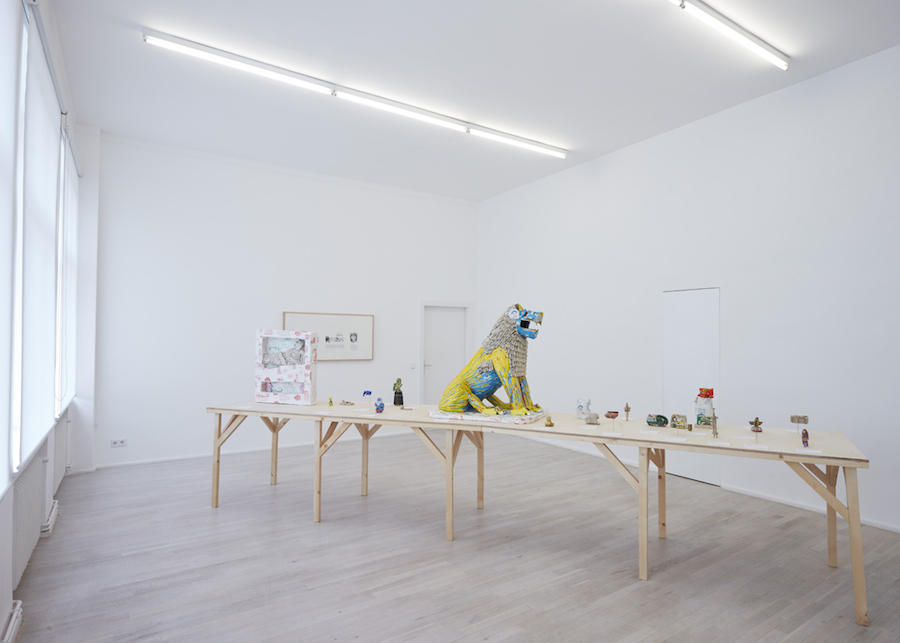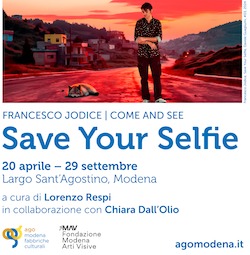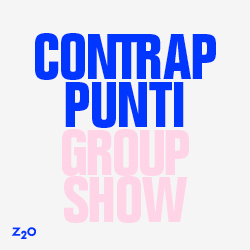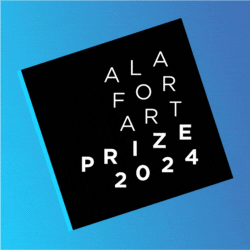
L’Image Volée
Curated by Thomas Demand
Fondazione Prada, Milan
18 Mar – 21 Aug 2016
“L’image volée, ” includes more than 90 works produced by over 60 artists from 1820 through the present day. Demand’s idea for the exhibition is to explore the way we all rely on pre-existing models, and how artists have always referred to existing imagery to make their own. Questioning the boundaries between originality, conceptual inventiveness and the culture of the copy, the project focuses on theft, authorship, annexation and the creative potential of such pursuits.
The exhibition presents three possible investigations: the physical appropriation of the object or its absence; theft as related to the image per se rather than the concrete object itself; and the act of stealing through the making of an image. The exhibition has been conceived as an eccentric, unconventional exploration of such topics through empirical inquiry. Rather than an encyclopedic analysis, it offers visitors an unorthodox insight into a voyage of artistic discovery and research.
The first section of the exhibition displays photographs, paintings and films in which the stolen or missing object becomes the scene or evidence of a crime. Included in this section are works that directly echo criminal ideas, such as Maurizio Cattelan’s framed theft report for an immaterial artwork he claimed as robbed – Senza titolo (1991) -, or Stolen Rug (1969), a Persian carpet that Richard Artschwager commissioned to be stolen for the exhibition “Art by Telephone” in Chicago. Other works evoke the absence resulting from an act of theft, like the canvas by Adolph von Menzel, Friedrich der Grosse auf Reisen (1854), which had the portrayed faces incised from it.
Other pieces are based on the alteration of preexisting artworks, for example, Richter-Modell (interconti) (1987), a painting by Gerhard Richter that was transformed into a coffee table by Martin Kippenberger and Pierre Bismuth’s Unfolded Origami (2016), who made new work out of original posters by Daniel Buren. All these works explore the notion of authors’ control over their own creations.
The second part of the exhibition analyzes the logic behind appropriation within the creative process. This section begins with the concept of counterfeiting and falsification, exemplified by the hand-reproduced banknote by forger Günter Hopfinger. The exhibition moves on to explore practices that are close to Appropriation Art, such as Sturtevant’s Duchamp Man Ray Portrait (1966), who reclaims a photographic portrait of Marcel Duchamp realized by Man Ray, substituting both the author and the subject of the photograph with herself. Other artists drive the logic of counterfeiting to its limit, including taking possession of another artist’s identity. Other artworks are ‘improvements’ or modifications of preexisting images, for example the défigurations by Asger Jorn, or collages such as those by Wangechi Mutu, realized from medical illustrations and anatomical drawings. Artists such as Haris Epaminonda, Alice Lex-Nerlinger and John Stezaker, meanwhile, encompass postcards, photograms or archival images into their works. Along with these, Erin Shirreff and Rudolf Stingel create their paintings or videos using a photographic reproduction of an artwork from the past as their starting point.

Michael Rakowitz. The invisible enemy should not exist
Galerie Barbara Wien, Berlin
Exhibition: April 30 – August 20, 2016
During the 2003 invasion of Iraq, Baghdad‘s National Museum of Iraq, the home of a large collection of world heritage objects, was not protected. The unsecured building was looted, and approximately 15, 000 objects disappeared, leaving a terrible void in the museum collection and the international collection of relics of human history.
For his first exhibition with Galerie Barbara Wien, Michael Rakowitz presents The invisible enemy should not exist, an ongoing project since 2007. It is a direct response to the pillage of Baghdad’s Museum, and a stirring homage to its former director, Dr. Donny George Youkhanna, who dedicated his time to recovering the missing artifacts until his death in 2011. It is also a reflection of Rakowitz‘s own biographical background, as his mother’s family fled Iraq in 1946, then settling in the USA. Raised in New York, the artist now lives and works in Chicago.
The project’s title is a translation of “Aj-ibur-shapu”, which was the name of the main processional street that passed through the Ishtar Gate in ancient Babylon. The history of this legendary gate offers interesting parallels to Michael Rakowitz’s project, in part because its new location since its excavation in the early 20th century is in Berlin’s Pergamon Museum. In the 1950s, the Iraqi government had reproduced a replica made from plaster and wood in Babylon. Michael Rakowitz has also devoted himself to the creation of replicas: true to scale reproductions of the objects looted from the National Museum of Iraq. His replicas are made of papier-mâché plastered with Arabic newspapers and the packaging of Middle Eastern food products sold in the United States. Rakowitz himself had never personally seen the missing objects. He gets his information through pictures and documentation in the University of Chicago’s Oriental Institute’s database and from Interpol’s website. His makeshift relics are mostly displayed upon a table designed to recreate the trajectory of the Aj-ibur-shapu-street.
Black and white pencil drawings annex narrative episodes. In one drawing, for instance, Dr. Donny George Youkhanna appears behind drums, an unexpected position to the ignorant viewer. A caption tells us that the archeologist used to play in a band called “99%” which covered songs by Deep Purple and Pink Floyd. Thus, the reason for the installation’s background soundtrack becomes clearer: Michael Rakowitz commissioned a band called Ayyoub to cover Deep Purple’s “Smoke on the Water” in Arabic, the ubiquitously played song of our time, which tells a story of senseless destruction and loss. (1)
Sites of display hold great importance in Michael Rakowitz’s work. His projects are often produced for a specific place and take note of the location’s history. For his piece May the arrogant not prevail – the title is an alternative translation of Aj-ibur-shapu – he used similar techniques of recycling product packaging to reproduce the Ishtar Gate, this time from the Iraqi government’s replica, and then exhibited it in a group show in Berlin’s Haus der Kulturen der Welt (2010). This impressive “garbage gate” surely produced a formidable symbolic resonance while on display in Berlin.
Yet, with the ongoing project on display now at Barbara Wien, The invisible enemy should not exist, it is its movability which makes it operate (2): replicas of displaced national treasures are “transformed” into contemporary art sculptures and exhibited in a commercial gallery, thereby introduced within the art market and potentially owned by collectors or institutions. When the British Museum acquired some of the project’s sculptures and displayed them within their Mesopotamian collection, it created a challenging tension. Rakowitz often plays with these different systems of value and trade with a delicious irony but also a substantive impact.
The artist’s commitment to fabricating the entire collection of the missing archaeological objects in papier-mâché could be seen as an almost Sisyphean labor in its absurd materiality. The non-preciosity of his replicas reveals the dreadful loss of the originals. They are evidently not strict counterfeits, but only “cheap” ghostly apparitions that paradoxically signify an absence by means of their own presence.
Text by Gauthier Lesturgie
(1) In “Smoke on the Water” the lyrics tell of the fire members of Deep Purple witnessed from the other side of Lake Geneva when the Montreux Casino burned as Frank Zappa played there on December 4th, 1971.
(2) The project has been shown among others in Lombard Freid Projects (NY, 2007), Sharjah Biennal (2007), Istanbul Biennal (2007), Modern Art Oxford (2009), and Hiroshima City Museum of Contemporary Art (2013). Parts of it are i.a. in these public collections: Van Abbemuseum, Eindhoven; British Museum, London; Metropolitan Museum of Art, New York; Smart Museum of Art – University of Chicago.














